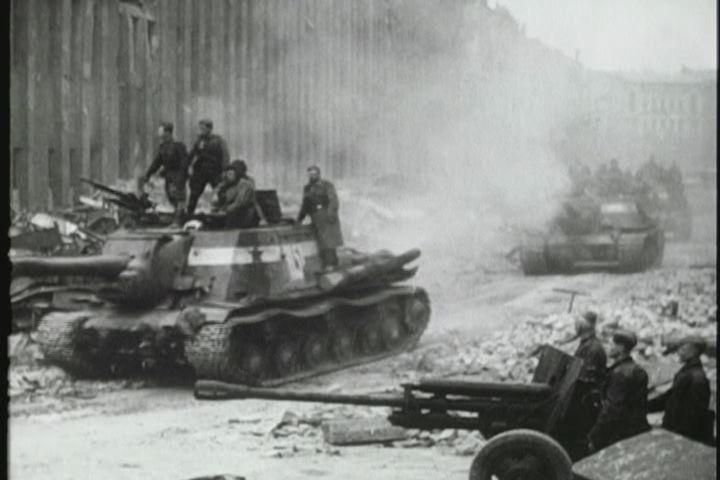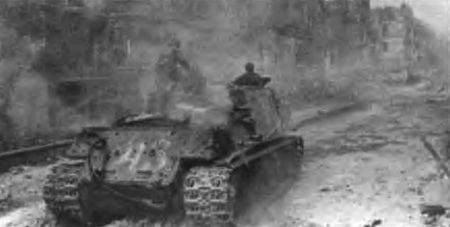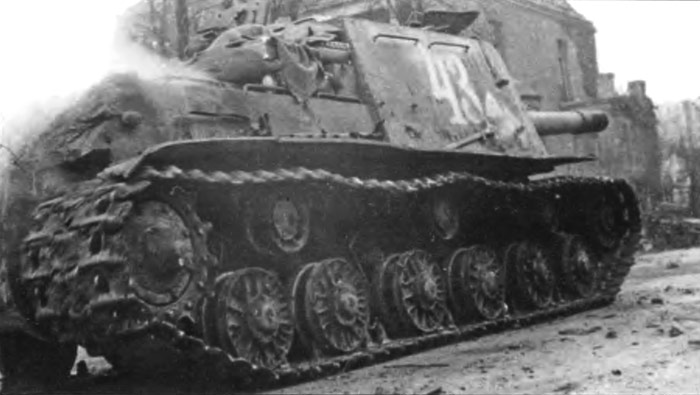Hello fellow forum members,
I'm building an JSU-152 tank destroyer from Tamiya, that was actively fighting during the ending off the Second World War.
But I was wanting to do some more in depth research on the divisions mentioned in the painting guide. It all says 'Unknown Unit'.
And I was thinking, there must at least be some information availlable on the particular vehicles? They couldn't just have grabbed some random vehicles for the kit, am I right?
Would I have to look for that kind off in-depth information in books instead off on the internet? Or do you guys have other resources which would be wort to take a closer look at?
Have never done such type off research, so help would be appreciated.
Hosted by Jacques Duquette
Research on divisions

Lada_Niva

Joined: October 06, 2019
KitMaker: 177 posts
Armorama: 97 posts

Posted: Saturday, December 14, 2019 - 11:53 PM UTC
BootsDMS

Joined: February 08, 2012
KitMaker: 978 posts
Armorama: 965 posts

Posted: Sunday, December 15, 2019 - 12:29 AM UTC
A good starting point might be this site:
http://www.niehorster.org/000_admin/000oob.htm
You might need to have an inherent feel for military organisations such as the relationship of Divisions, Corps, Army etc (and their Soviet counterparts) but this would be a good starting point. Note that the author of this site makes I think an error in designating Tank Destroyer units as "132mm" when I'm sure he must mean "152mm" which of course is where your request comes in.
That said, Soviet vehicles are unlikely to have differed much in appearance from one unit to another when it comes to finishing a model; overall green and some turret numbers, with perhaps the addition as necessary of the Guards insignia. Unless you wish to label your completed model as belonging to a specific unit there may not be that much point in researching this, save that research is often very satisfying in its own right.
Brian
http://www.niehorster.org/000_admin/000oob.htm
You might need to have an inherent feel for military organisations such as the relationship of Divisions, Corps, Army etc (and their Soviet counterparts) but this would be a good starting point. Note that the author of this site makes I think an error in designating Tank Destroyer units as "132mm" when I'm sure he must mean "152mm" which of course is where your request comes in.
That said, Soviet vehicles are unlikely to have differed much in appearance from one unit to another when it comes to finishing a model; overall green and some turret numbers, with perhaps the addition as necessary of the Guards insignia. Unless you wish to label your completed model as belonging to a specific unit there may not be that much point in researching this, save that research is often very satisfying in its own right.
Brian
marcb

Joined: March 25, 2006
KitMaker: 1,244 posts
Armorama: 1,226 posts

Posted: Sunday, December 15, 2019 - 01:33 AM UTC
The units are:
Option A: Unknown unit, Konigsberg 1945
Option B: Unknown unit, Berlin 1945
Option C: 349th Guards heavy SP artillery unit, Breslau 1945
Option D: 384th Guards heavy SP artilery unit, Czestochova, Poland 1945.
Option C had a white triangle painted in front of the 43 on the sides.
Option B

Option C


Option D

Kit instructions
https://www.1999.co.jp/eng/image/10099002
Hope that helps.
Option A: Unknown unit, Konigsberg 1945
Option B: Unknown unit, Berlin 1945
Option C: 349th Guards heavy SP artillery unit, Breslau 1945
Option D: 384th Guards heavy SP artilery unit, Czestochova, Poland 1945.
Option C had a white triangle painted in front of the 43 on the sides.
Option B

Option C


Option D

Kit instructions
https://www.1999.co.jp/eng/image/10099002
Hope that helps.

Lada_Niva

Joined: October 06, 2019
KitMaker: 177 posts
Armorama: 97 posts

Posted: Sunday, December 15, 2019 - 02:17 AM UTC
Thank you all for the usefull information so far.
I will take a look at it later, when I got more time to spend.
I will take a look at it later, when I got more time to spend.

Lada_Niva

Joined: October 06, 2019
KitMaker: 177 posts
Armorama: 97 posts

Posted: Monday, December 16, 2019 - 05:34 AM UTC
Quoted Text
A good starting point might be this site:
http://www.niehorster.org/000_admin/000oob.htm
You might need to have an inherent feel for military organisations such as the relationship of Divisions, Corps, Army etc (and their Soviet counterparts) but this would be a good starting point. Note that the author of this site makes I think an error in designating Tank Destroyer units as "132mm" when I'm sure he must mean "152mm" which of course is where your request comes in.
That said, Soviet vehicles are unlikely to have differed much in appearance from one unit to another when it comes to finishing a model; overall green and some turret numbers, with perhaps the addition as necessary of the Guards insignia. Unless you wish to label your completed model as belonging to a specific unit there may not be that much point in researching this, save that research is often very satisfying in its own right.
Brian
Could you explain me a bit more about this information? Because I don't really know how to use it. Or how it can help with my research. Never actually had this kind off information so far.
BootsDMS

Joined: February 08, 2012
KitMaker: 978 posts
Armorama: 965 posts

Posted: Monday, December 16, 2019 - 07:46 AM UTC
First a brief outline of military organisation in its simplest form:
A “Unit” is normally identified as a Battalion or a Regiment; when 2 or more Units are organised together, they form a “Formation” and the first (lowest) level of these is a “Brigade”; 2 or more Brigades make a “Division”; 2 or more Divisions make a “Corps”, and 2 or more Corps make an “Army”; 2 or more Armies make an “Army Group”. Note that the Soviets refer to an Army Group as a “Front”.
These are tactical groupings and do not confuse with the generic term Army, which obviously refers to an organised military force of a nation.
Such listings, not least on the referenced site, are referred to as an “Order of Battle”, or ORBAT for short. An ORBAT is normally a list of formations and units organised for a specific task, although obviously for day to day administrative matters there will be a “peacetime ORBAT”.
The referenced site – apart from ORBATs – also contains a guide to military map symbols; whilst complex these are key in understanding the size and type of Formation listed. For example 2 “Xs” indicates a Division and so on; it’s probably worth studying the size symbols to get a handle on all this. Note that for any/most operations, an ORBAT will also include specialist troops attached for just the purpose; these can range – depending on the grouping size – to additional Formations.
If you identify the “USSR” tab you will then find a listing of Soviet Formations; look under Operational ORBATs and you will then see “Battle for Berlin”. Under this you will then come to a site listing “Stavka” (Staff) and 3 x Army Groups (remember the Sovs call these “Fronts”). Click on to anyone of these and you’ll come up with a listing of “Armies”. Click on to this and you should then be able to navigate your way to the respective Corps. As I said, you’ll need to study the map symbols closely. This is an extremely specialist area and is confusing even for the military(!) but you may wish to note that most military history books utilise the same symbols (more or less).
An alternative to wrestling with this site might be one of the excellent Osprey/Vanguard campaign books; I haven’t looked at their lists for a while but I’m fairly sure they do one on the Battle for Berlin. They are usually quite good value for money.
A “Unit” is normally identified as a Battalion or a Regiment; when 2 or more Units are organised together, they form a “Formation” and the first (lowest) level of these is a “Brigade”; 2 or more Brigades make a “Division”; 2 or more Divisions make a “Corps”, and 2 or more Corps make an “Army”; 2 or more Armies make an “Army Group”. Note that the Soviets refer to an Army Group as a “Front”.
These are tactical groupings and do not confuse with the generic term Army, which obviously refers to an organised military force of a nation.
Such listings, not least on the referenced site, are referred to as an “Order of Battle”, or ORBAT for short. An ORBAT is normally a list of formations and units organised for a specific task, although obviously for day to day administrative matters there will be a “peacetime ORBAT”.
The referenced site – apart from ORBATs – also contains a guide to military map symbols; whilst complex these are key in understanding the size and type of Formation listed. For example 2 “Xs” indicates a Division and so on; it’s probably worth studying the size symbols to get a handle on all this. Note that for any/most operations, an ORBAT will also include specialist troops attached for just the purpose; these can range – depending on the grouping size – to additional Formations.
If you identify the “USSR” tab you will then find a listing of Soviet Formations; look under Operational ORBATs and you will then see “Battle for Berlin”. Under this you will then come to a site listing “Stavka” (Staff) and 3 x Army Groups (remember the Sovs call these “Fronts”). Click on to anyone of these and you’ll come up with a listing of “Armies”. Click on to this and you should then be able to navigate your way to the respective Corps. As I said, you’ll need to study the map symbols closely. This is an extremely specialist area and is confusing even for the military(!) but you may wish to note that most military history books utilise the same symbols (more or less).
An alternative to wrestling with this site might be one of the excellent Osprey/Vanguard campaign books; I haven’t looked at their lists for a while but I’m fairly sure they do one on the Battle for Berlin. They are usually quite good value for money.
 |






